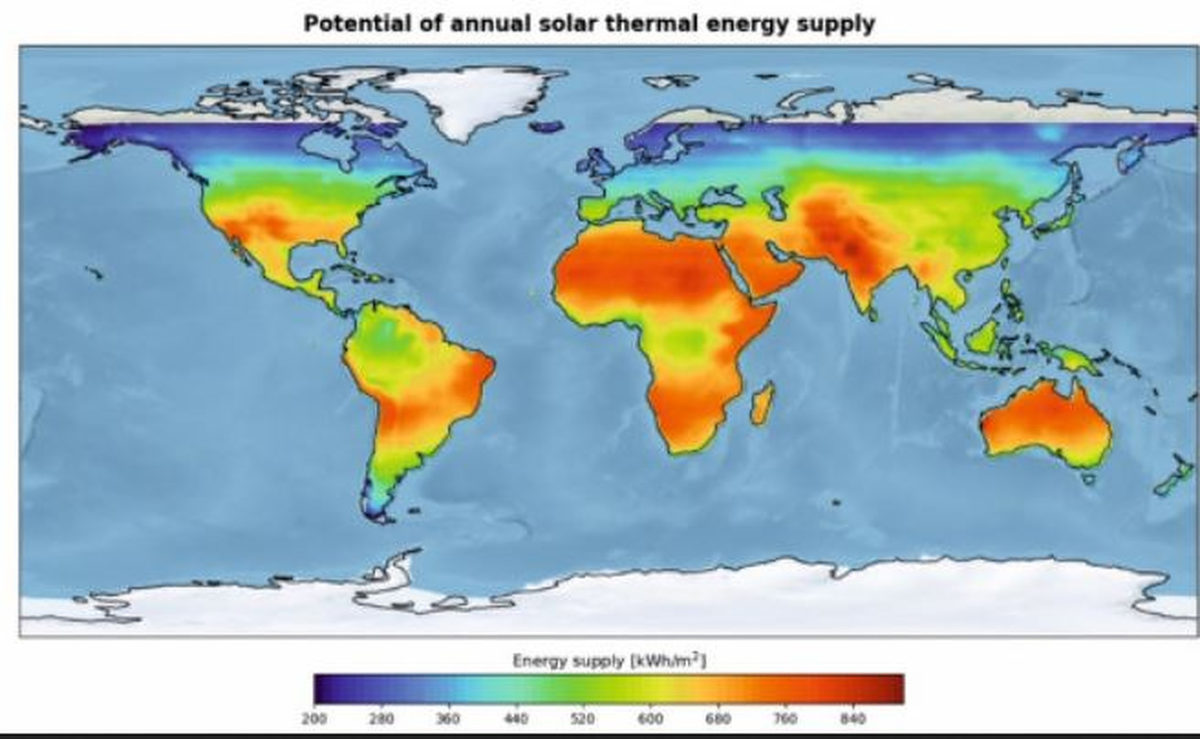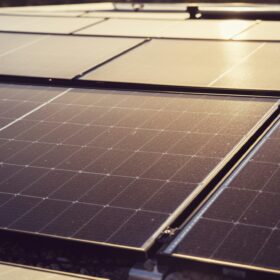From pv magazine global
Researchers from the Central European University in Hungary have estimated the global potential of photovoltaic-thermal (PVT) energy production on rooftops between 2022 and 2060.
Their model predicts that PVT systems have the technical potential to produce curently around 47.6 PWh, with the contribution on the PV side being around 29.5 PWh (62%), and that of thermal production 18.1 PWh (38%).
The study uses a high-resolution, geospatial energy supply model to estimate the useable building rooftop areas across eleven world regions and calculates the corresponding global and regional production that should be provided by rooftop PV-T collectors during the 39-year perios. The model builds on an existing model called BISE, which has three major types of inputs: meteorological, building-related and technological parameters. According to the authors, the strength of their algorithm is that “it requires only easily obtainable and reproducible input data for meteorological and technological measures.”
The scientists assumed the electric and thermal efficiency of the PV-T collectors to be of 21.6% and 63.3%, respectively, as well as a temperature coefficient of -0.35% C for the PV unit. They also assumed the PV panels to rely on monocrystalline cells and an antireflective tempered glass and the thermal modules to be based on a flat plate collector and a copper absorber. For both technologies, degradation rates and possible technology advancements were not considered.
The model estimated total rooftop area values to vary between 3 billion square meters in Europe and 70 billion square meters in centrally planned Asia, including China, in the first year of the simulation period. However, only one-third of the total rooftop area was considered suitable for the installation of PV-T collectors.
By 2060, the highest installable rooftop area is expected in centrally planned Asia, Latin America, and North America. The lowest area is projected for Sub Saharan Africa, at 4.75 billion billion square meters, and Europe, at 1.2 billion billion square meters.
Total PV-T energy production potential is expected to be highest in centrally planned Asia, North America, and Latin America, with 9.7 PWh, 6.0 PWh, and 4.5 PWh, respectively.
“The most restrained potentials, on the other hand, are expected in Europe (0.24 PWh) and Sub Saharan Africa (1.28 PWh) where either the geographical (climatic) or the utilization potential of solar collectors may be reduced,” the scientists said.
Between 2022 and 2060, Latin America, the Asia-Pacific region, and the Middle East and North Africa (MENA) region are expected to see the greatest increase in PV-T energy production potential.
The scientists described their findings in “Estimating the global technical potential of building-integrated solar energy production using a high-resolution geospatial model”, which was recently published in the Journal of Cleaner Production.
“As the flexibility and the complexity of the BISE model allows and it could lead to even more robust estimations, our forthcoming studies will also prioritize simulations of solar potential undertaken at urban and neighborhood scale and supported by very high-resolution LIDAR-based rooftop information,” they said.
This content is protected by copyright and may not be reused. If you want to cooperate with us and would like to reuse some of our content, please contact: editors@pv-magazine.com.








By submitting this form you agree to pv magazine using your data for the purposes of publishing your comment.
Your personal data will only be disclosed or otherwise transmitted to third parties for the purposes of spam filtering or if this is necessary for technical maintenance of the website. Any other transfer to third parties will not take place unless this is justified on the basis of applicable data protection regulations or if pv magazine is legally obliged to do so.
You may revoke this consent at any time with effect for the future, in which case your personal data will be deleted immediately. Otherwise, your data will be deleted if pv magazine has processed your request or the purpose of data storage is fulfilled.
Further information on data privacy can be found in our Data Protection Policy.